The Land Rover brand has been associated with adventure for decades, and for good reason. In 1979, a Range Rover won the first running of the Dakar Rally, and when you think of the Camel Trophy, the iconic livery on the Discovery comes to mind.
Since that time, the company has held a number of challenging driving events, most notably the Land Rover Experience Tour. For this year’s recently-concluded excursion to Peru, fourteen teams were selected from across Asia Pacific to take part in the regional finals in Laos, where only four (teams) would move on to compete in Peru behind the wheel of the fifth-generation Discovery.
We’ve already reported on the Malaysian qualification event back in September, and a few weeks ago, we were given an opportunity to have a taste of just what the participants had to go through in Laos, which includes a number of challenges.
As you can tell from the photos, we didn’t get a chance to drive the latest Discovery, but instead found ourselves in the Discovery Sport. No matter, as the smaller brother to the renowned Discovery still comes with many of Land Rover’s off-road systems, including Terrain Response, Gradient Release Control, All-Terrain Progress Control and Hill Descent Control.
On the other hand, it is worrying how little modifications have been done to the vehicles. Aside from a roof rack to carry a spare, some towing equipment and some snacks to keep occupants fed, the SUVs appear to be pretty much fresh out of the showroom, still wearing their road-spec tyres.
Although they may appear new, these cars have been used by participants for weeks prior to our arrival, and have seen their fair share of “abuse.” Nonetheless, we were assured by experienced instructors that these Discovery Sports are more than up to the task. We’ll have to see.
Day one of the Laos adventure began as with most drive programmes, a thorough briefing on vehicle safety and how various systems in the Discovery Sport works. Briefing over, we made a beeline for the cars, and headed out of the city of Vientiane.
Our first stop, after a relatively breezy drive along the Mekong River, was towards the first challenge of the day. It involves a number of tennis balls strung out along a course, which we’ll have to tap with the car’s side mirrors within a time (four minutes) and speed (10 km/h) limit.
This may sound like a simple thing, but it is an important means to gauge a driver’s ability to properly place a vehicle in a desired position, which is important when navigating demanding terrain.
Next on the list of challenges is a reverse slalom, a pretty rudimentary affair where you’ll have to guide the vehicle going in reverse around a course. Missing a gate along the way result in an automatic disqualification, and each post hit adds 10 seconds to your overall time (four-minute limit).
“As slow as possible, as fast as necessary,” goes the Land Rover motto, and it is certainly relevant when attempting this challenge during a heavy downpour. It isn’t an easy challenge, with some knocking over one or two posts while they put their vehicle manoeuvring abilities to the test.
With that over, we then departed for school located in a relatively remote area, one that required driving through some pretty difficult terrain, which is made more stressful thanks to rainfall. Given the abundance of space in our vehicles, local crew members brought along supplies and stationary for the children studying there, while having an impromptu English lesson session.
Bidding farewell to the cheerful Laotian children, it was time to get back to the challenges, and the last one for the day is titled “what’s wrong with my car?” Here’s how it works: we are given 10 minutes to identify what’s missing or changed on the cars that would have an adverse effect on safety.
A comprehensive check revealed some obvious peculiarities, like a missing wheel nut, a covered reverse camera and seatbelts that have been tucked away. The more keen-eyed observer will notice things like an untightened fuel filler cap and an unsecured spare tyre, which was missed by a number of participants, us included.
Waking bright and early for day two, we once again made our way into Laos’ interior, this time traversing across even rougher terrain that is either rocky, dusty, sandy, or muddy. Depending on the environment, the instructors advised participants to select the proper Terrain Command mode as well as engage other supporting systems for a hassle-free and confident time behind the wheel.
As with most adventures, there’s always the chance of the unexpected taking place (including an tyre puncture), and it was no exception for us. Heavy rain from the night before made a water crossing a lot more dangerous to attempt than the instructors were willing to risk. Safety is always a paramount on any off-road tour, as capable as the vehicle you’re in may be.
The unplanned pit stop meant we had to backtrack and go along another route, which sacrificed some time needed for the remaining challenges. Nonetheless, it allowed for more time behind the wheel, and more importantly, experiencing the joys of off-roading.
One of the challenges that were given a miss by us include a camera activity challenge, whereby participants had to use the Discovery Sport’s 360-degree camera only to spot letters and numbers in containers mounted on 12 poles. These will form the model code for the new Discovery 5, and there are penalties for exceeding the speed limit, or hitting a pole.
Another one is the blind driver test, which is pretty much self-explanatory, and requires your co-driver to guide you along a route as quickly and safely as possible. The goal here is efficient communication, which is an ongoing theme for all the challenges, including the final one.
Getting back to our overnight stop, we thankful that there was still enough time for the train tracks challenge. The premise is as follows: there’s one driver, one spotter and two lifters. The driver will have to get the Discovery Sport from one end of the train tracks to the other, while the spotter will have to guide the driver as he drives on the narrow tracks.
The tracks themselves have gaps in them, which will need to filled with wooden boards (they’re pretty heavy if you should know) by the lifters. There’s a 15-minute time limit for this challenge, and the car must not roll into an unfilled gap, or reverse at any point. Sounds easy, right?
However, being the cavalier, competitive creatures that we are, it became a full-on race to get our respective Discovery Sports across the tracks. This naturally ended in disaster, as we didn’t have the foresight to fill certain gaps before it was too late. Of course, this challenge isn’t about outright speed in execution as a team, but to focus on observation, planning, communication and proper accomplishment of the task. It goes back to the motto, “as slow as possible, as fast as necessary.”
I mentioned earlier that “we’ll have to see” if these near-stock Discovery Sports would be able to tackle the terrain you see in the photos. Most people would say a Defender is better suited to the task, and that is probably true, but the Discovery Sport managed to bring us across challenging terrain safely, and in some levels of comfort as well.
Therefore, this “city SUV” has certainly proved its worth, and did so in stylish road-spec tyres no less. It’s good to know that after all these years, despite moving further upmarket, the core values of a Land Rover are still very much intact.
Looking to sell your car? Sell it with Carro.

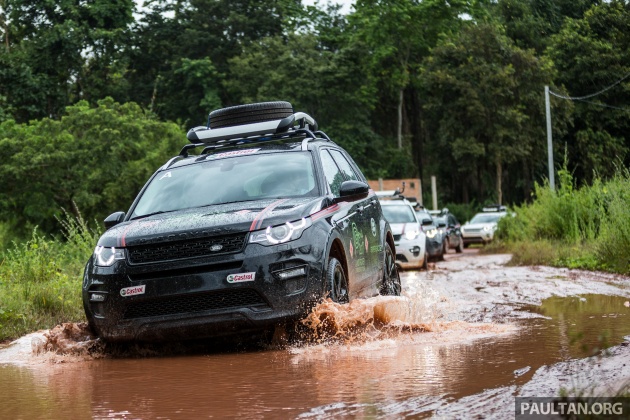










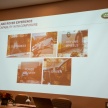
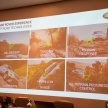
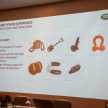
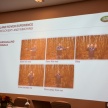
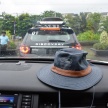

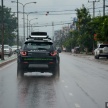
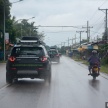
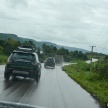
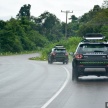
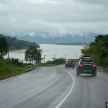
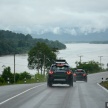
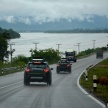
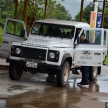

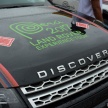
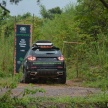
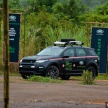

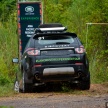
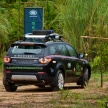
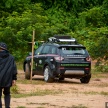

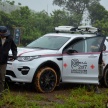

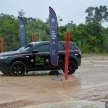
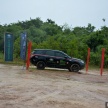
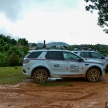
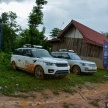
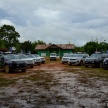
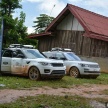
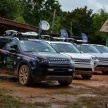
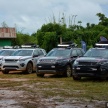
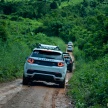
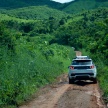
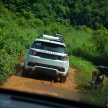
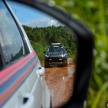

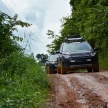
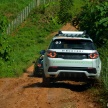
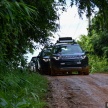
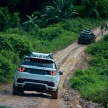
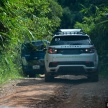
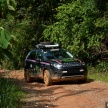
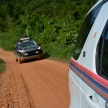
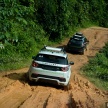
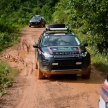
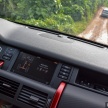

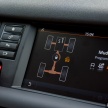
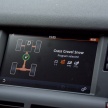
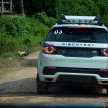
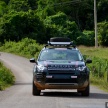
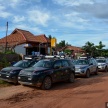
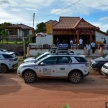
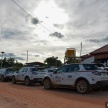
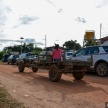
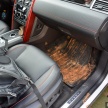
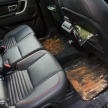
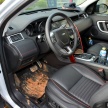

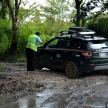
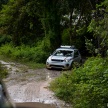
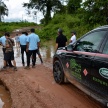
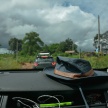
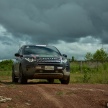
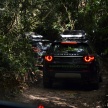
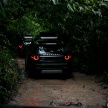
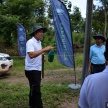
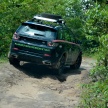
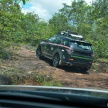
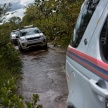
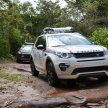
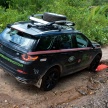
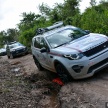
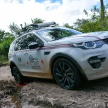
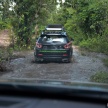
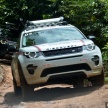
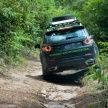
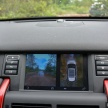

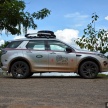
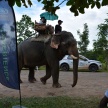
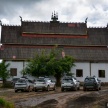
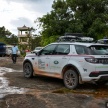
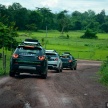
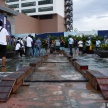
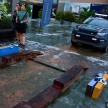
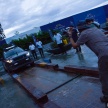
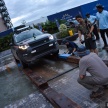
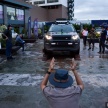
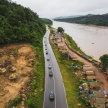

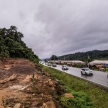
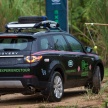
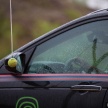
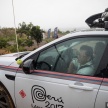
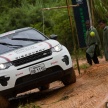

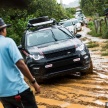
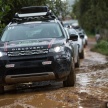




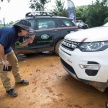

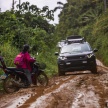
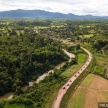
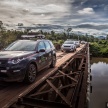
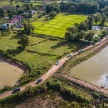
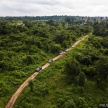
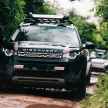
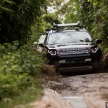
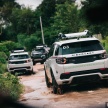
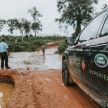

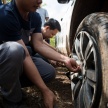
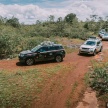
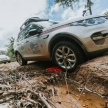
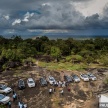
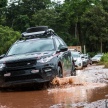
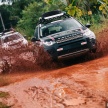
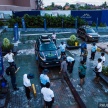

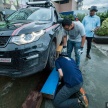
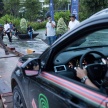
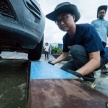
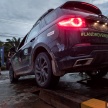









The tracks covered are only 1% of the original Camel Trophy challenge. All the cars are fitted with road tyres because the organizers knew the route was ‘light and easy’.
Hardly testing the vehicle’s true capabilities.
Many tracks leading to Orang Asli villages or POS in Malaysian interiors would be 10 times more difficult than this.